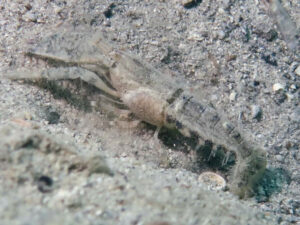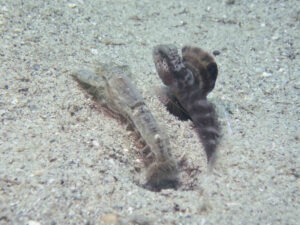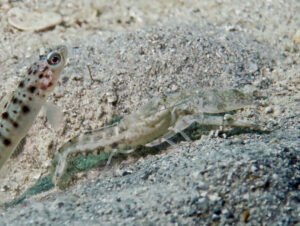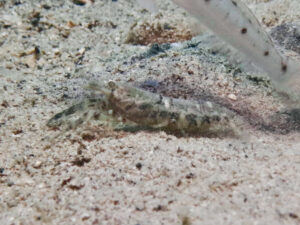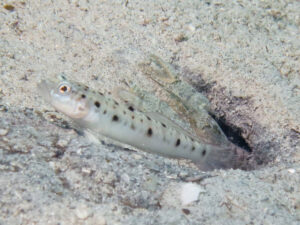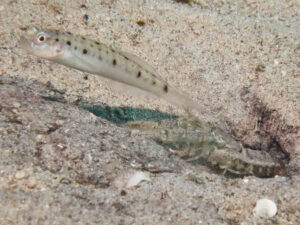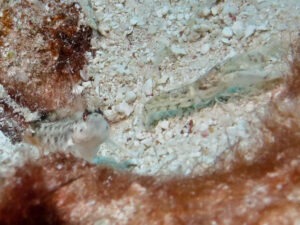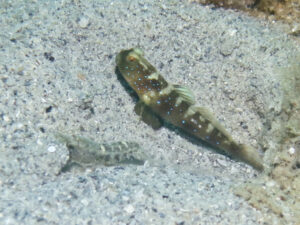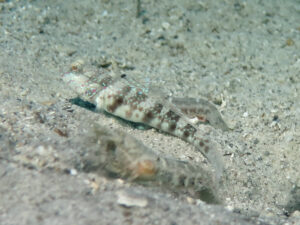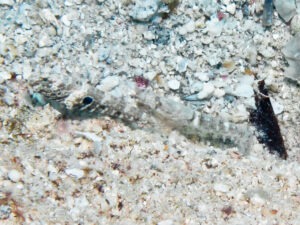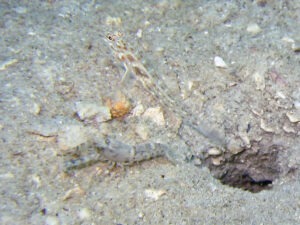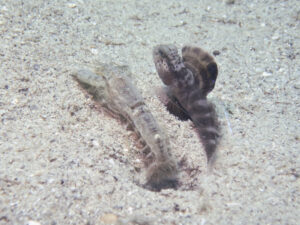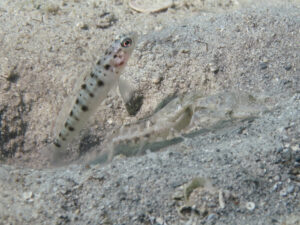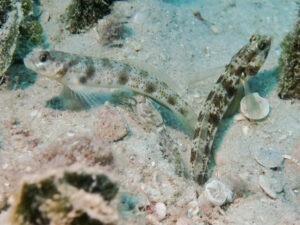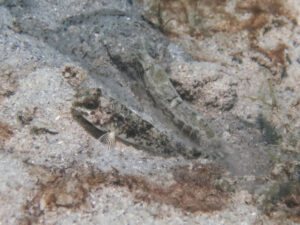Tasselled Snapping Shrimp
Alpheus species 14
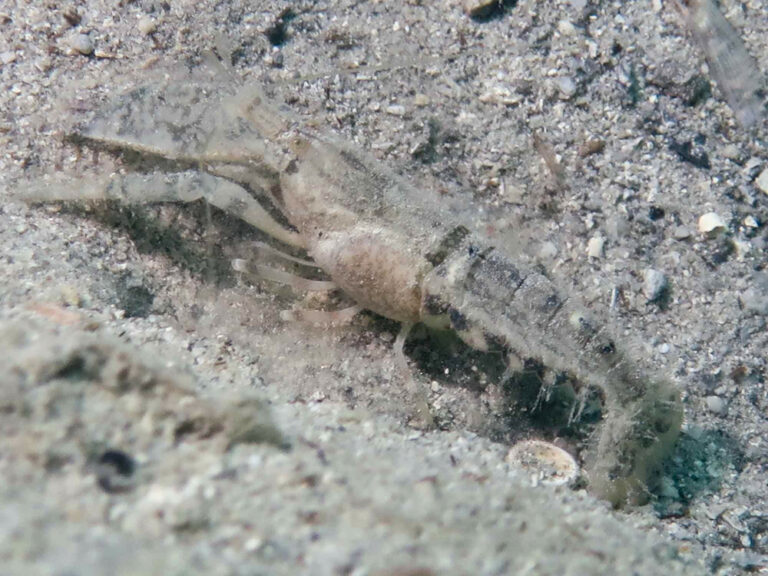
Tasselled Snapping Shrimp
Alpheus species 14
undescribed
Description
Carapace: There is a speckled grey pattern on the carapace often with a light and a dark diagonal band on the lateral aspect. The bands are conspicuous but form no particular pattern. The dorsum is plain faintly stippled grey, with a bold transverse band at the junction with the abdomen and sometimes a dark longitudinal streak in the midline. There is often a dark band through the eyes.
The rostrum is brown and white.
The antennae are greenish-grey.
The chelate second legs are pale grey
The walking legs are grey with white joints and a dark patch proximal to each
Pincers are pale grey with fine markings usually, but not always, gathered into three dark bands.
The dorsum of the abdomen has a broken midline black line usually reduced to a small black patch on each segment. The patch on the fifth is just anterior to a pair of black spots. The lateral view of the abdomen has the best features for identification.There is a prominent longitudinal white zone from which the tassels arise. Below this, the abdominal segments are distinctively marked in brown and white. The brown areas are flecked with irregular light grey markings and may cover the whole of the abdominal segment or only the anterior or posterior portion. There are white bands in segments one and four and often the intervening ones. The tassels may arise from all segments but are usually more prominent on segments 4, 5 and 6.
The tail scutes are dark with pale centres but may be so tasselled that the details of the scutes are difficult to see.
Setae (hairs) are gathered into tassels along the posterior segments of the abdomen and over the tail. Setae arise from the conspicuous white line laterally.
Pale grey mottled carapace and nippers.A boldly patterned abdomen with brown and white markings on the abdominal segments below a line of prominent setae in the lateral view.
Similar Shrimps
The Chocolate Chip Shrimp also has a Tasselled abdomen but the markings are different in both dorsal and lateral aspects.
It can be hard to tell this from the green shrimp when only the carapace and pincers are visible. Its habitat is completely different so the problem only arises when sorting photographic images.
Taxonomy
Undescribed species, no written or photographic records apart from ours from Australia.
We have not seen this shrimp form a pair with any of the other shrimps described in this book. The picture is a little unclear as there are shrimps with similar markings and there seems to be variation in the distribution of setae in the shrimps that live in silt.
Ecology
HABITAT
Sand flats are made up of fine sand, silty in parts, with small amounts of Halophila seagrass struggling to survive on a gently sloping sea bed much of which is used as an anchorage for yachts.
Preferred substrate
Silty sand with an admixture of shell debris.
Depth range
5 to 15 metres
Proximity to reef
Burrows are constructed well away from the reef.
NATURAL HISTORY
They are associated with a surprising number of species of shrimpgoby.
The function of the setae is unclear but they do seem to be a normal part of the shrimp’s anatomy. They tend to pick up sand and this may assist camouflage.
Distribution
Published distribution: none
Our records:
Australia; Low Isles, Fitzroy Island, Lizard Island, Ribbon Reef 3 & 10.
Solomon Islands; Kolombangara Island, Santa Isabel Island.
Associated Goby species
Associated Shrimpgobies (eight species)
Usual associations
Cryptocentrus fasciatus, Y-bar Shrimpgoby
Cryptocentrus melanopus, Singapore Shrimpgoby
Cryptocentrus strigilliceps, Target Shrimpgoby
Ctenogobiops crocineus, Silverspot Shrimpgoby
Mahidolia mystacina, Smiling Shrimpgoby
Vanderhorstia ambanoro, Twinspot Shrimpgoby
Vanderhorstia phaeosticta, Yellowfoot Shrimpgoby
Unusual associations
Yongeichthys nebulosus, Hairfin Goby

